
When someone reads the beginning of the Bible, the first events are Creation in Genesis chapters 1-2, the Fall into Sin in chapter 3, the first murder in chapter 4, and the genealogy of the descendants of Adam to Noah in chapter 5. Following these chapters is the Flood account in chapters 6-9. The world had become so sinful that God had to put an end to mankind and start over with Noah and his family. Why was it “Judgment Day” for all humanity except Noah? Because in Genesis 6:5 it says, “The LORD saw how great man’s wickedness on the earth had become, and that every inclination of the thoughts of his heart was only evil all the time.” Yet Genesis 6:9 says Noah “was a righteous man, blameless among the people of his time, and he walked with God.”
Emphasizing the reality of this historical event, Jesus spoke about the Flood in Matthew 24:38-39 and in Luke 17:26-27, as did the writer of Hebrews 11:7 and Peter in 2 Peter 2:5 and 3:5-6. While there are many references for Noah and the Flood in the Bible, there are many references to a worldwide deluge in the annals of history outside the Bible all over the planet. There are over 270 Flood accounts today on all the continents, some with amazing details from the account in Genesis 6-9, which happens to be the longest and most detailed account of all. However, these various versions, with their subtle changes, are best explained as people retold the event, yet lost or changed some of the details as the story was handed down. The following are some examples from around the globe.
The Hawaiians tell of one good man and his family who survived a flood that covered the whole earth that killed all the wicked people. The man’s name was Nu-u and he built a great canoe with a house on it and filled it with animals. The Chinese have a similar account, but is more specific. The man’s name was Fuhi, and he alone survived a flood that covered the highest mountains on the earth with his wife, three sons and three daughters (not the three son’s wives as the Bible states in Genesis 7:13). In a Chinese temple’s painting depicting Fuhi’s flood, a dove with an olive branch in its beak is flying toward the boat, just as the Bible stated in Genesis 8:10. The Toltecs of Mexico state that the world lasted 1716 years before being destroyed by a worldwide flood that covered even the highest mountains. (Their time-span of 1716 years fits the biblical genealogy from Genesis 5.) A few people survived in a “closed chest.” Afterward, the people had families and began building a huge tower in case of another flood. However, the language became confused so people wandered from there to other parts of the world. (Gee, sounds like the Tower of Babel to me from Genesis 11:1-9! By the way, there are nine other accounts like this on the planet similar to the Tower of Babel. ) The Toltecs claim they started from seven friends and their wives who spoke the same language and traveled together until they settled in southern Mexico, 520 years after the Flood.
Why should we bother to know these accounts? Because they verify the Bible as true—the truth fits the facts, corresponding to the evidence we have. Here are over 270 stories from across the planet telling the same account—the event of a worldwide flood, where all perished except the inhabitants of a boat. Coincidence? Hardly! Did all of these cultures just happen to come up with similar stories? Or did the event really happen, and people later told the story, altering parts or omitting details as time went on? What other event do we find repeated hundreds of times with such detail?
Learn how to defend your Christian Faith
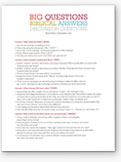
Big Questions Biblical Answers Supplemental Materials
by Brad Alles
- November 2024
- August 2024
- July 2024
- June 2024
- September 2022
- August 2022
- July 2022
- June 2022
- May 2022
- April 2022
- March 2022
- February 2022
- January 2022
- December 2021
- November 2021
- October 2021
- September 2021
- August 2021
- July 2021
- June 2021
- May 2021
- April 2021
- March 2021
- February 2021
- January 2021
- December 2020
- November 2020
- October 2020
- September 2020
- August 2020
- July 2020
- June 2020
- May 2020
- April 2020
- March 2020
- February 2020
- January 2020
- December 2019
- November 2019
- October 2019
- September 2019
- August 2019
- July 2019
- June 2019
- May 2019
- April 2019
- March 2019
- February 2019
- January 2019
- December 2018
- November 2018
- October 2018
- September 2018
- August 2018
- July 2018
- June 2018
- May 2018
- April 2018
- March 2018
- February 2018
- January 2018
- December 2017
- November 2017
- October 2017
- September 2017
- August 2017
- July 2017
- June 2017
- May 2017
- April 2017
- March 2017
- February 2017
- January 2017
- December 2016
- November 2016
- October 2016
- September 2016
- August 2016
- July 2016
- June 2016
- May 2016
- April 2016
- March 2016
- February 2016
- January 2016
- December 2015
- November 2015
- October 2015
- September 2015
- August 2015
- July 2015
- May 2015
- April 2015
- March 2015
- February 2015
- January 2015
- December 2014
- November 2014
- October 2014
- September 2014
- August 2014
- July 2014
- June 2014
- May 2014
- April 2014
- March 2014
- February 2014
- January 2014
- December 2013
- November 2013
- October 2013
- September 2013
- August 2013
- July 2013
- June 2013
- May 2013
- April 2013
- March 2013
- February 2013
- January 2013
- December 2012
- November 2012
- October 2012
- September 2012
- August 2012
- July 2012
- June 2012
- May 2012
- April 2012
- March 2012
- February 2012
- January 2012




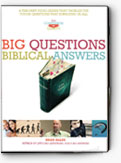
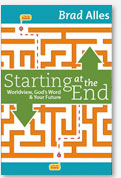




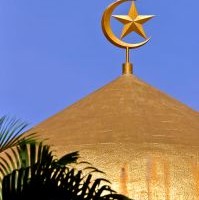
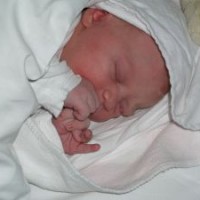
Comments are closed.